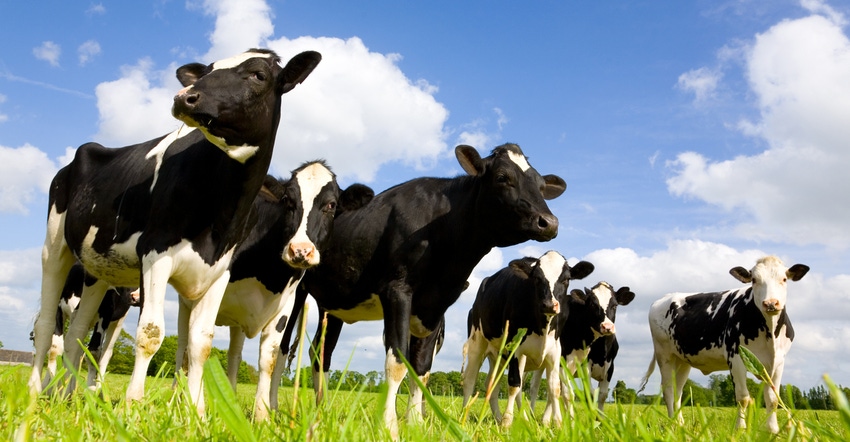
Dairy operations are going to be challenged in 2022 “by the rising cost of everything,” according to Ben Buckner, chief grains and dairy analyst for AgResource Co. But “the price of everything has been reset, and that includes milk.”
Buckner, who spoke during a recent Professional Dairy Producers Dairy Signal webinar, said while 2022 is not necessarily going to be an easy year due to high feed prices and rising inflation, it is a year when dairy farmers will want to maximize milk production and become as efficient as possible.
He noted that U.S. dairy farmers have a lot going for them right now. Domestic demand as well as export demand for dairy products are high, and the milk supply in the U.S. and globally is tight.
“U.S. milk production has been declining for the past year, primarily due to rising feed prices,” Buckner said. Milk production shortfalls in Europe, Australia and New Zealand exceed those in the U.S.
“U.S. dairy export demand will stay elevated at least through the next six months, and likely longer,” he said. “Even though milk prices have been rising, I don’t think we are at a level pricewise that slows global food purchases.”
Impact of rising food prices
According to Buckner, rising food prices are going to hurt people who live in countries like India, Nigeria and Kenya who make $100 per week or less and spend 50% to 70% of their income on food.
“In the U.S., the average American spends only 7% of their income on food,” he noted. “Food consumption in the western world is not going to be affected by higher prices for food. Everyone is going to complain about high food prices, but we will all still buy food.”
Countries like Brazil, Argentina and Russia, which all have developing economies, will be protective of their exportable surpluses. “They will likely place tariffs on exports, particularly grains, which will just exacerbate the situation,” he explained.
“So as this chaotic time period unfolds, we’re going to see commodities used as a hedge for inflation,” Buckner said. “Seven-dollar corn, $17 soybeans, $25 milk and $100 crude oil — where we are now — are all commodities that seem cheap. As we start to worry about inflation, commodities will be attracting investments, which will increase the likelihood of big-time, volatile commodity price corrections.”
But he predicted the corrections will be short-lived, only lasting a day or two.
Buckner said milk prices will stay between $19 and $25 per cwt through the fourth quarter of 2022.
“There is no chance that dairy markets will drop below this level due to high feed costs, declining milk production, rising demand for dairy products and the tight labor supply,” he said.
Another reason Buckner is confident U.S. milk supplies will continue to decline and prices for dairy products will remain strong is competition for animals from the beef market.
“We have a drought in the western half of the country, and the beef herd is declining because there isn’t enough pasture to feed the beef herd,” he explained. “That will keep cull cow prices high, which means dairy farmers will cull marginal cows, which will keep milk prices high.”
Buckner said while we don’t know how long the war in Ukraine will last, we are all going to learn together what war does to commodity prices.
“Volatility is certain as stocks tighten and prices reach record or near-record levels,” he explained. “This is going to be an exciting time. Even small perceived changes in world grain and dairy supply and demand will have a big impact on prices. Strap in!”
About the Author(s)
You May Also Like






